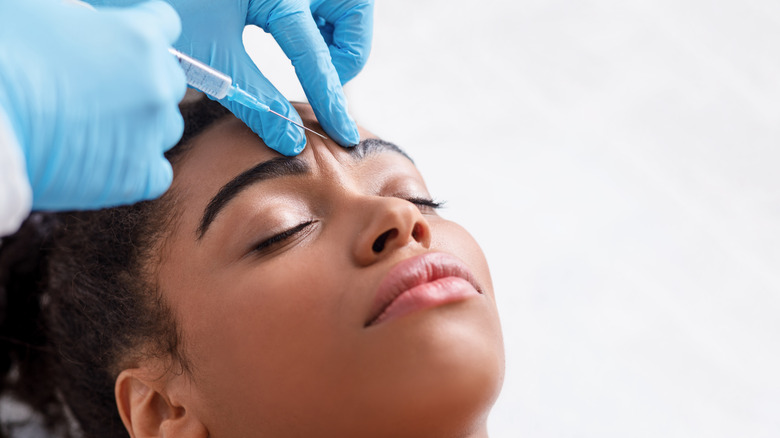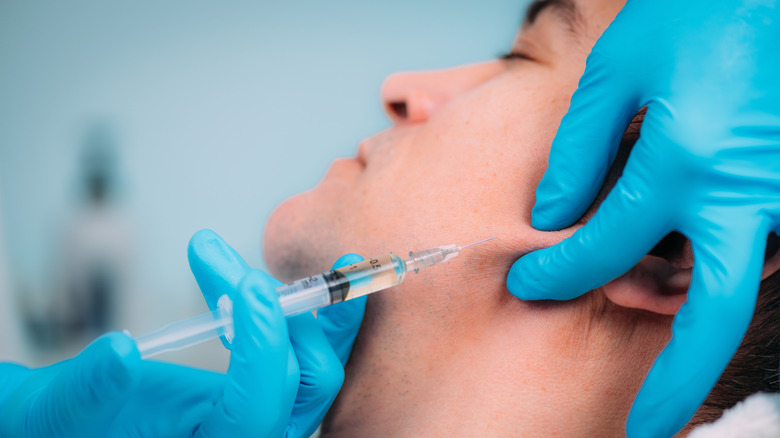What Is A Liquid Face-Lift And Is It Safe?
Plastic surgery is both expensive and invasive, but there is a non-surgical option that can help you firm the skin on your face without going under the surgeon's knife. Liquid facelifts involve applications that don't require an incision or scar, according to Johns Hopkins Medicine. When it comes to liquid facelifts, there are several options to choose from, and can help to target areas of your face that you want to see become firmer and plumper.
Designed to target fine lines, wrinkles, sagging skin, brow lines, and plumping up temples, liquid facelifts work best for people with early signs of aging, says the American Society of Plastic Surgeons. Besides avoiding undergoing surgery and having a scar following a traditional facelift, liquid facelifts generally don't require any recovery period and most people are candidates for in-office procedures. This means that you won't have to sacrifice time off of work or postpone your schedule for a recovery period. The best part? The results from a liquid facelift can be nearly immediate, which means that you can go to bed with firmer, plumper skin the very night you get a liquid facelift. In most cases, there is minimal risk of side effects, and the procedure is preferred over traditional facelifts. Here's what you should know about this popular skin procedure.
Rejuvenation without surgery
Similar to better-known procedures like Botox, liquid facelifts usually involve the use of similar injectable solutions (via the American Society of Plastic Surgeons). Choices include dermal fillers, and wrinkle-reducing solutions, which include Botox itself. You may even be familiar with hyaluronic acid fillers like Juvederm, but there are others that your healthcare provider may recommend depending on your unique needs for rejuvenating your face.
Like other injectable facial procedures, liquid facelifts are temporary and will eventually wear off (via Johns Hopkins Medicine). You can expect the results from a liquid facelift to last for approximately eight months, though your doctor can give you more information on the specific injectables being used and how long their effects will last. The length of results will depend on the purpose of the liquid facelift, with those intended to reduce the appearance of scars having a different timeframe than the results of a liquid facelift meant for plumping fine lines or alleviating sagging brow lines (per WebMD). Although they are considered safe, some common side effects may include slight bruising, inflammation, minor pains, and some redness, among others. After getting a liquid facelift, you should avoid sunlight for the first day, drink plenty of water, and ensure that you get enough sleep.


